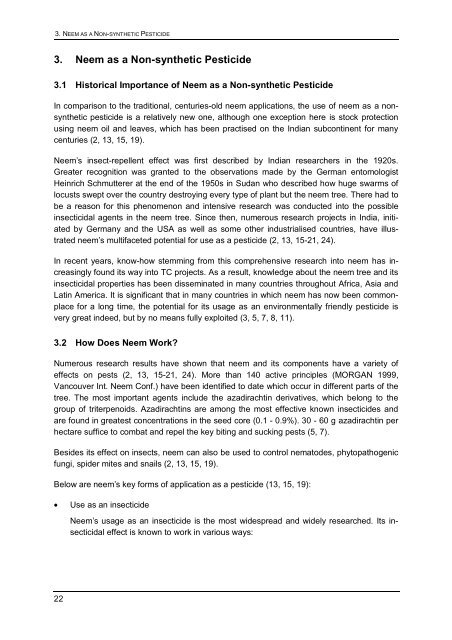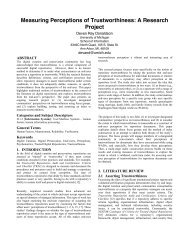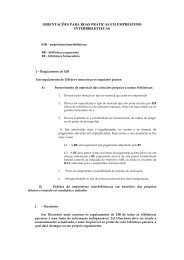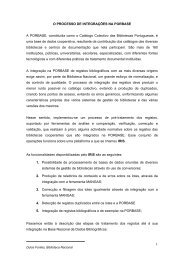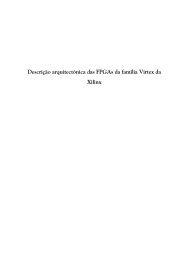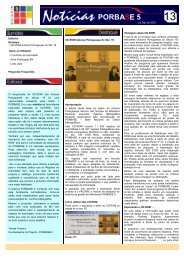Status report on global Neem usage - Biblioteca Nacional de Portugal
Status report on global Neem usage - Biblioteca Nacional de Portugal
Status report on global Neem usage - Biblioteca Nacional de Portugal
Create successful ePaper yourself
Turn your PDF publications into a flip-book with our unique Google optimized e-Paper software.
3. NEEM AS A NON-SYNTHETIC PESTICIDE<br />
3. <strong>Neem</strong> as a N<strong>on</strong>-synthetic Pestici<strong>de</strong><br />
3.1 Historical Importance of <strong>Neem</strong> as a N<strong>on</strong>-synthetic Pestici<strong>de</strong><br />
In comparis<strong>on</strong> to the traditi<strong>on</strong>al, centuries-old neem applicati<strong>on</strong>s, the use of neem as a n<strong>on</strong>synthetic<br />
pestici<strong>de</strong> is a relatively new <strong>on</strong>e, although <strong>on</strong>e excepti<strong>on</strong> here is stock protecti<strong>on</strong><br />
using neem oil and leaves, which has been practised <strong>on</strong> the Indian subc<strong>on</strong>tinent for many<br />
centuries (2, 13, 15, 19).<br />
<strong>Neem</strong>’s insect-repellent effect was first <strong>de</strong>scribed by Indian researchers in the 1920s.<br />
Greater recogniti<strong>on</strong> was granted to the observati<strong>on</strong>s ma<strong>de</strong> by the German entomologist<br />
Heinrich Schmutterer at the end of the 1950s in Sudan who <strong>de</strong>scribed how huge swarms of<br />
locusts swept over the country <strong>de</strong>stroying every type of plant but the neem tree. There had to<br />
be a reas<strong>on</strong> for this phenomen<strong>on</strong> and intensive research was c<strong>on</strong>ducted into the possible<br />
insecticidal agents in the neem tree. Since then, numerous research projects in India, initiated<br />
by Germany and the USA as well as some other industrialised countries, have illustrated<br />
neem’s multifaceted potential for use as a pestici<strong>de</strong> (2, 13, 15-21, 24).<br />
In recent years, know-how stemming from this comprehensive research into neem has increasingly<br />
found its way into TC projects. As a result, knowledge about the neem tree and its<br />
insecticidal properties has been disseminated in many countries throughout Africa, Asia and<br />
Latin America. It is significant that in many countries in which neem has now been comm<strong>on</strong>place<br />
for a l<strong>on</strong>g time, the potential for its <strong>usage</strong> as an envir<strong>on</strong>mentally friendly pestici<strong>de</strong> is<br />
very great in<strong>de</strong>ed, but by no means fully exploited (3, 5, 7, 8, 11).<br />
3.2 How Does <strong>Neem</strong> Work?<br />
Numerous research results have shown that neem and its comp<strong>on</strong>ents have a variety of<br />
effects <strong>on</strong> pests (2, 13, 15-21, 24). More than 140 active principles (MORGAN 1999,<br />
Vancouver Int. <strong>Neem</strong> C<strong>on</strong>f.) have been i<strong>de</strong>ntified to date which occur in different parts of the<br />
tree. The most important agents inclu<strong>de</strong> the azadirachtin <strong>de</strong>rivatives, which bel<strong>on</strong>g to the<br />
group of triterpenoids. Azadirachtins are am<strong>on</strong>g the most effective known insectici<strong>de</strong>s and<br />
are found in greatest c<strong>on</strong>centrati<strong>on</strong>s in the seed core (0.1 - 0.9%). 30 - 60 g azadirachtin per<br />
hectare suffice to combat and repel the key biting and sucking pests (5, 7).<br />
Besi<strong>de</strong>s its effect <strong>on</strong> insects, neem can also be used to c<strong>on</strong>trol nemato<strong>de</strong>s, phytopathogenic<br />
fungi, spi<strong>de</strong>r mites and snails (2, 13, 15, 19).<br />
Below are neem’s key forms of applicati<strong>on</strong> as a pestici<strong>de</strong> (13, 15, 19):<br />
• Use as an insectici<strong>de</strong><br />
22<br />
<strong>Neem</strong>’s <strong>usage</strong> as an insectici<strong>de</strong> is the most wi<strong>de</strong>spread and wi<strong>de</strong>ly researched. Its insecticidal<br />
effect is known to work in various ways:


